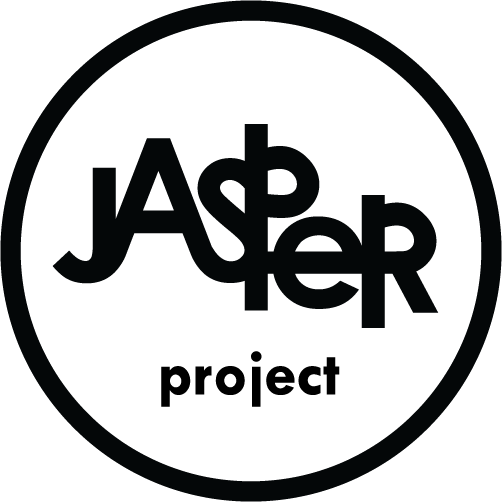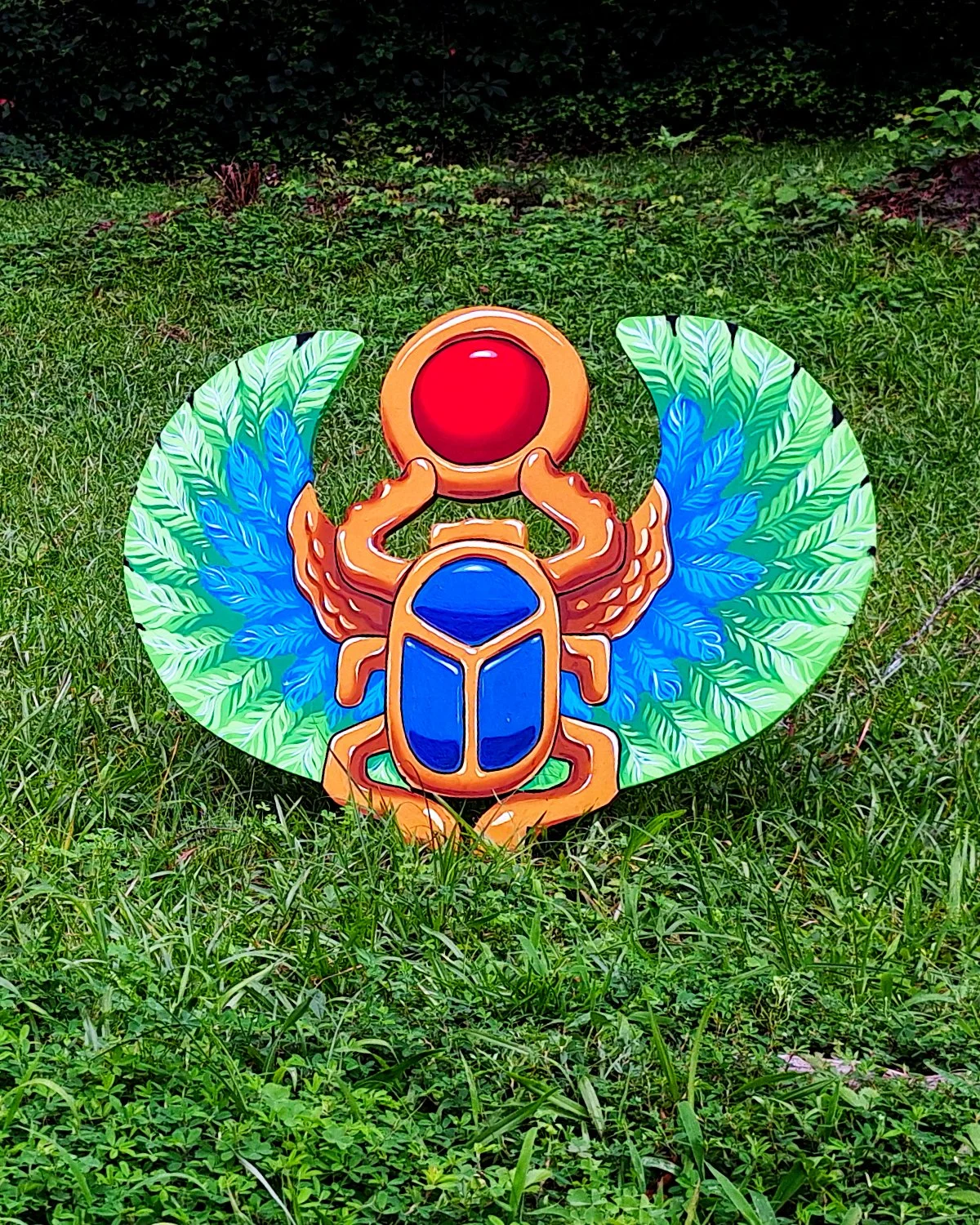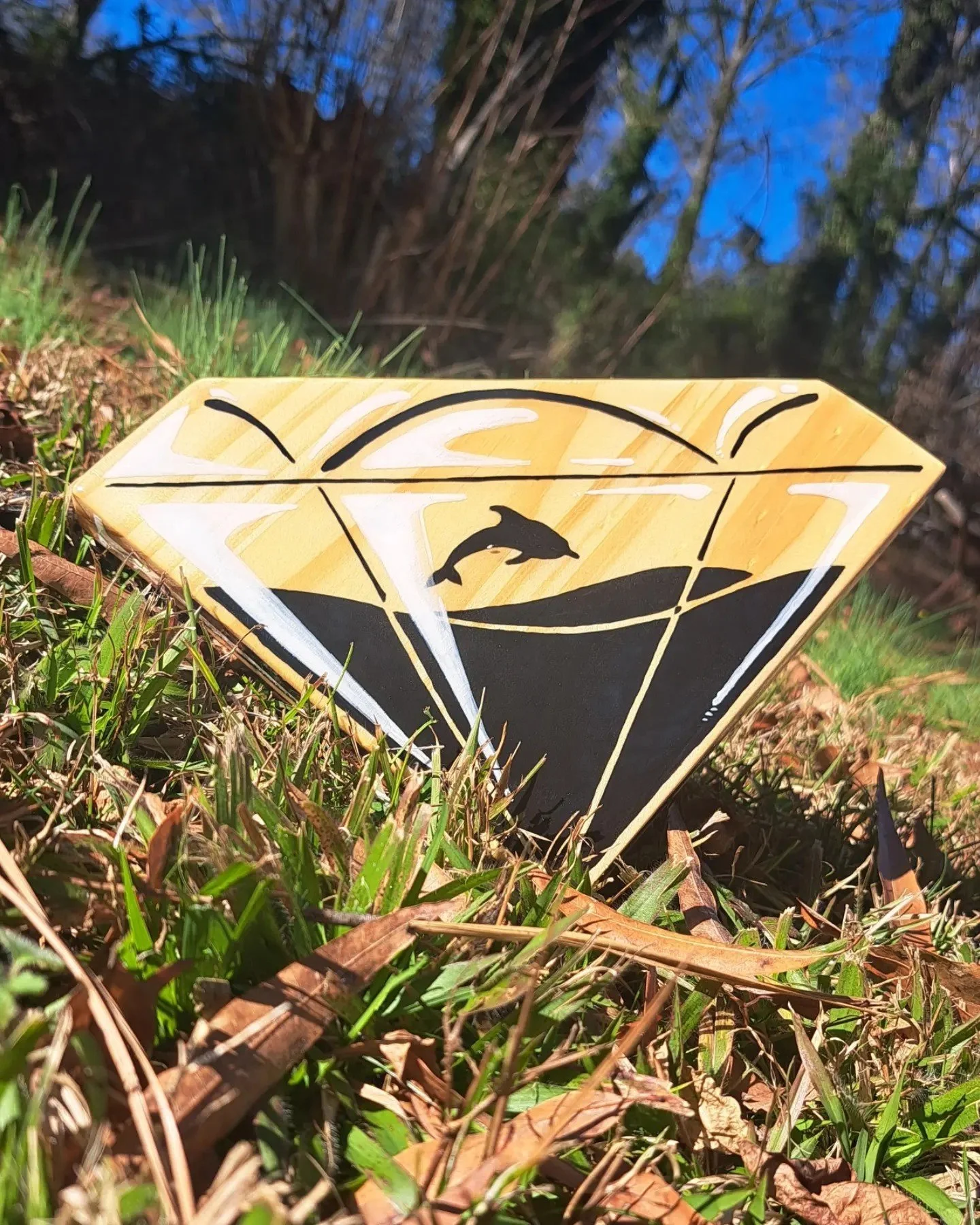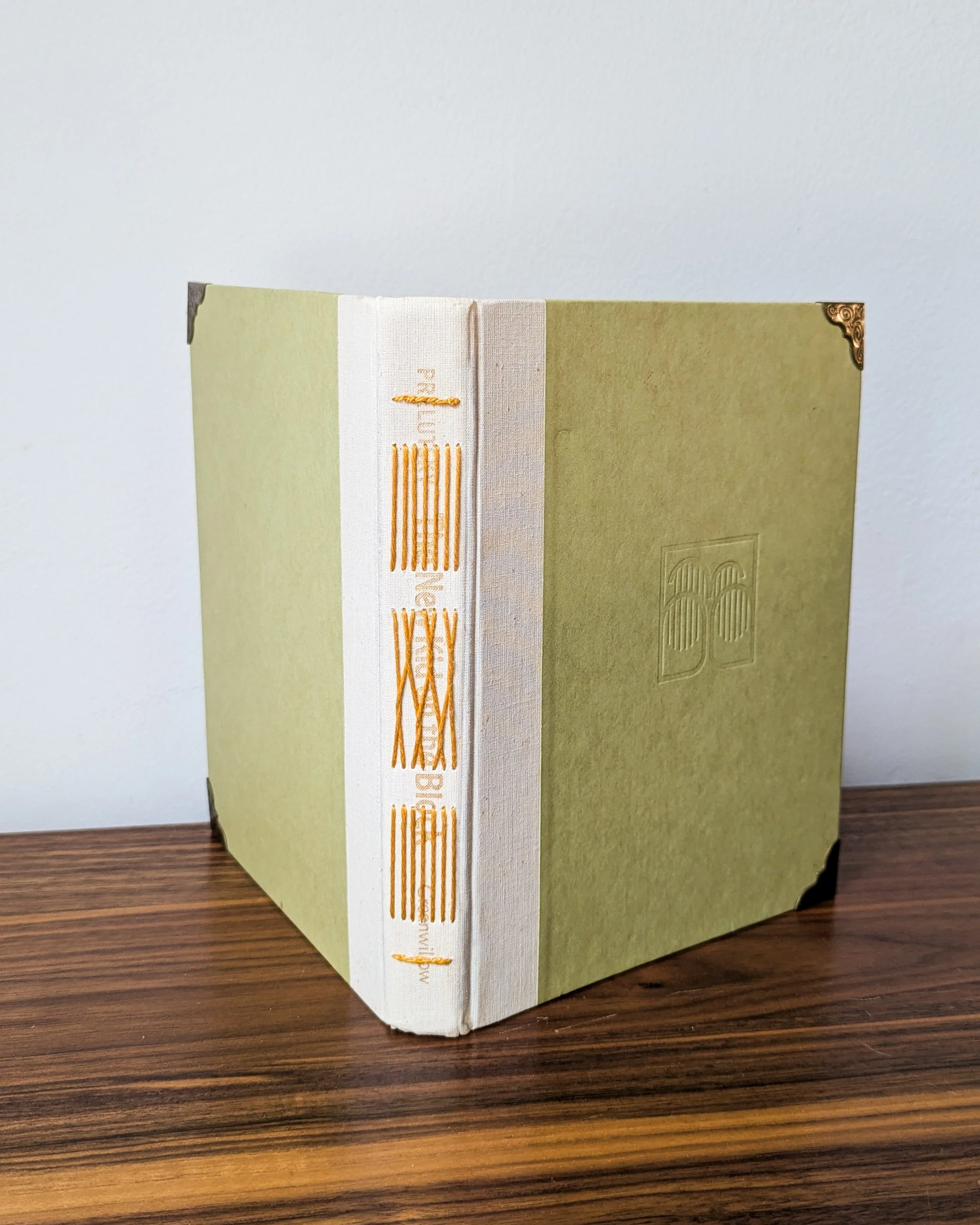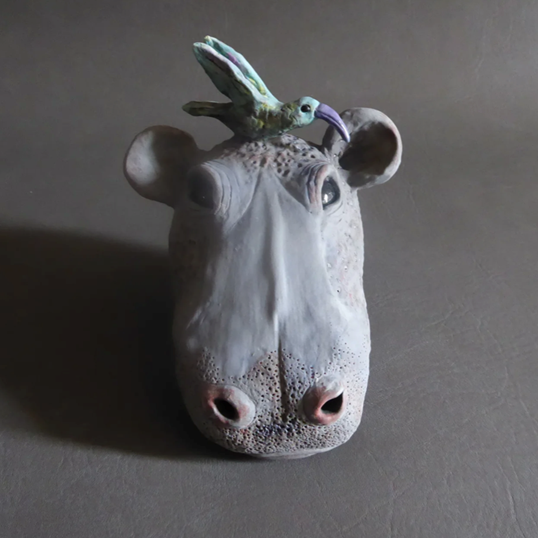Kara Virginia Russo is an emerging visual and performance artist based in Greenville and Columbia, South Carolina, who creates intimate portraits of her own and others’ inner selves. For the month of July, she is Jasper’s featured Tiny Gallery artist.
Russo is a multimedia artist who works in ink, drawing, embroidery, collage, and found objects, both on paper and in sculpture and assemblage. This variety of style and texture allows her to parallel the rich images that flow and intertwine in her mind.
Though she went to art school, afterwards, she “didn’t make art for around 12 or 15 years,” feeling like it was “a language [she] didn’t speak.” When she finally started again, she naturally gravitated towards circles.
“I made circles because they felt incredibly symbolic. Everything in my life was changing all at once during that period, and the circles stood in for all the feelings and questions and explorations I was having around my ideas and beliefs about God,” Russo details. “The perfection of the circle, and the inability to draw a perfect one by hand…there was a lot of things I was playing with that I could make sense of visually and let go of needing to think verbally for a while.”
Russo shares that, “upon her adult diagnosis of Autism Spectrum Disorder, she embraced her inner imaginative world and her love of symbol, pattern, and repetition and developed a visual vocabulary and the mixed media techniques to support it.”
“I began exploring an imaginary world of my own, in which the planetary landscape gave me a visual vocabulary for interactions with myself and with God,” she describes. “I've always just thought of this place as simply The Planet. I'm still playing with those things, which is why much of my work feels planetary.”
Russo uses these skills to craft not only the visions within her own mind’s eye, but to gaze at the energy of those around her, taking what they cannot see of themselves and reproducing it. Beyond her solo work, she has collaborated on several musical projects, contributing visual art and experimental film, as well as live ritual-based performances.
Her style has taken a distinct shape, one formed from “filling up sketchbooks as fast as [she] could.” Though many of her works start in a sketchbook as individual pieces, she has even begun mounting and framing entire sketchbooks behind glass.
“It makes the pieces feel like museum artifacts or something. Explorer's notebooks, like I've gone to the planet, looked around at how things work and look and grow and move, and come back with my explorers notes and diagrams and drawings,” Russo shares. “And of course, the planet is just a stand in, a way of exploring reality that tries to get behind things and into the essence. Or, thought about another way, I make windows into reality. The reality we can't see. In this way my work functions a little bit like religious iconography.”
Russo’s work has been shown in solo and group exhibitions in North and South Carolina and Germany, and responses to her work still overwhelm her: “I like to joke that if you make several thousand circles, eventually they become so interesting that people start wanting to pay money for them (which still amazes me. Every. Time.).”
For her Tiny Gallery show, Russo has collected pieces from two of her series: Music of the Spheres and Tiny Sketchbook. Her Music of the Spheres series is a cacophony of shaded circles, given direct and relation by electric white lines. Her Tiny Sketchbook series expands these images with further texture and detail, as ink expertly bleeds and threads dip in and out of the paper.
“Beauty has a way of putting things back together; my art practice is a way for me to throw open the windows of my interior and let the sunshine in,” Russo describes. “I'm always hoping that the finished art does that for other people too.”
Virginia Russo’s work will be available to peruse and purchase via Jasper’s virtual gallery space until July 31st.
